39 respiratory system parts
Respiratory system diagram: Function, facts, conditions, and more With so many working parts, keeping the respiratory system healthy is important. People can do this by avoiding smoking, eating a healthful diet, and exercising regularly. Last medically reviewed ... Respiratory System | Interactive Anatomy Guide - Innerbody There are 3 major parts of the respiratory system: the airway, the lungs, and the muscles of respiration. The airway, which includes the nose, mouth, pharynx, larynx, trachea, bronchi, and bronchioles, carries air between the lungs and the body's exterior. The lungs Continue Scrolling To Read More Below... Anatomy Explorer UPPER RESPIRATORY TRACT
Respiratory System in Humans: Parts, Function, Diagram, Anatomy There are 8 major organs of the Respiratory system: Nasal Cavity Pharynx Epiglottis Trachea Bronchi Bronchioles Alveoli Diaphragm Nasal Cavity It is present in the nose and has small hair and mucous which filters the suspended impurities in the air and also warms up the air. Pharynx It is an opening into the esophagus and the windpipe.

Respiratory system parts
Respiratory System: How We Breathe - ThoughtCo Structures of the respiratory system can be grouped into three main categories: air passages, pulmonary vessels, and respiratory muscles. Examples of respiratory structures include the nose, mouth, lungs, and diaphragm. In the breathing process, air flows into and out of the lungs. Gases are exchanged between the air and blood. The respiratory system - Respiratory system - BBC Bitesize The respiratory system The following structures can be found in the human thorax: trachea bronchi (left and right bronchus) alveoli ribs intercostal muscles pleural membranes diaphragm The trachea... Respiratory system structure and function - BBC Bitesize The human body is designed to take in oxygen and to remove carbon dioxide. The respiratory system, in combination with the cardiovascular system, is responsible for providing this function.
Respiratory system parts. The 12 parts of the respiratory system (characteristics and functions) In this sense, the respiratory system consists mainly of the nostrils, mouth, pharynx, larynx, trachea, lungs and diaphragm. And some of them, in turn, are divided into other structures that we will also analyze. Let's go there. 1. Nostrils The nostrils are the beginning of the respiratory system. Components of the human respiratory system | Britannica The upper airway system comprises the nasal cavity, sinuses, and pharynx; the lower airway system consists of the larynx, trachea, bronchi, bronchioles, and alveolar ducts. The blood and cardiovascular system can be considered elements of a working respiratory system. As air enters the nasal cavity through the nostrils, it is warmed and ... Human Respiratory System - Diagram, Features, Parts and Functions - VEDANTU The other parts of the respiratory system include the nose, larynx, pharynx, trachea or the windpipe, bronchi, lungs, blood vessels, the airways for the passage of air, and the muscles that support the breathing. All these parts together form the respiratory tract that starts from the external nostrils and nasal chamber and goes up to the lungs. Respiratory System: Parts, Function, and Diseases - WebMD Parts of the Respiratory System Your respiratory system includes your: Nose and nasal cavity Sinuses Mouth Throat (pharynx) Voice box (larynx) Windpipe (trachea) Diaphragm Lungs Bronchial...
Respiratory System • Anatomy, Parts & Functions The nose is the first portion of the respiratory tract and serves as a vent for air exchange. Inhaled air is warmed, moistened, and cleaned so it can travel safely into other parts of the respiratory tract. Glottis - Structure & Function The vocal folds and the space between the folds are referred to as the glottis. Respiratory System - Definition, Function and Parts | Biology Dictionary In humans and most mammals, the anatomy of the respiratory system is divided into three parts. The first is the series of conducting tubes that carry air from the atmosphere towards the lungs. The second part consists of the muscles of respiration - the diaphragm and intercostal muscles in the ribs. The lungs form the third part. Human Respiratory System - BYJUS The respiratory tract in humans is made up of the following parts: External nostrils - For the intake of air.; Nasal chamber - which is lined with hair and mucus to filter the air from dust and dirt.; Pharynx - It is a passage behind the nasal chamber and serves as the common passageway for both air and food.; Larynx - Known as the soundbox as it houses the vocal chords, which are ... Human Respiratory System - Detailed Explanation Additional Human Respiratory System Parts. The following are a few of the additional respiratory system parts: Cilia: Tiny hairs that move in a wave-like pattern to clear our airways of dust and other irritants are known as cilia. Epiglottis: The epiglottis is a tissue flap that closes as we swallow to keep food and liquids out of our airways ...
Respiratory System Anatomy and Physiology - Nurseslabs The functions of the respiratory system are: Oxygen supplier. The job of the respiratory system is to keep the body constantly supplied with oxygen. Elimination. Elimination of carbon dioxide. Gas exchange. The respiratory system organs oversee the gas exchanges that occur between the blood and the external environment. Respiratory system: Anatomy and functions | Kenhub The lower respiratory tract includes the larynx below the vocal cords, the trachea, bronchi, bronchioles and the lungs. The lungs are most often considered as part of the lower respiratory tract, but are sometimes described as a separate entity. They contain the respiratory bronchioles, alveolar ducts, alveolar sacs and alveoli . Respiratory system information - DQKD Respiratory System: Parts, aids the body in the exchange of gases between the airThe respiratory system works hand-in-hand with the nervous and cardiovascular systems to maintain homeostasis in blood gases and pH, Organs, and the lungs, and breathing muscles, and More. Respiratory system diagram: Function, when you exchange oxygen and carbon ... Respiratory System: Functions, Facts, Organs & Anatomy The respiratory system is the network of organs and tissues that help you breathe. It includes your airways, lungs and blood vessels. The muscles that power your lungs are also part of the respiratory system. These parts work together to move oxygen throughout the body and clean out waste gases like carbon dioxide.
What are the 10 parts of the respiratory system? - BIOSCIENCE It includes your airways, lungs, and blood vessels. The muscles that strengthen your lungs are also part of the respiratory system. These parts work together to carry oxygen throughout the body and clean up waste gases such as carbon dioxide. Respiration consists of two functions: Inhaling: The process of breathing in oxygen.
Respiratory System Parts and Functions for Kids - HowForKids Function of the Respiratory System. Respiratory System for Children: Respiration is a natural phenomenon that allows taking in oxygen and eliminating carbon dioxide. All cells need a constant supply of oxygen in order to live. The air we inhale is made up of a mixture of gases.
What Are the Main Parts of the Respiratory System? Main parts of the human respiratory system include the mouth, nasal cavity, lungs, bronchial tubes, diaphragm and trachea, according to National Heart, Lung, and Blood Institute. Other facets of the respiratory system are the larynx, epiglottis, alveoli and the blood vessels that carry oxygen away from the lungs.
Respiratory System - Building a Medical Terminology Foundation A bronchial tree (or respiratory tree) is the collective term used for these multiple-branched bronchi. The main function of the bronchi, like other conducting zone structures, is to provide a passageway for air to move into and out of each lung. The mucous membrane traps debris and pathogens.
Respiratory System Organs and Their Functions - New Health Advisor The three major parts of the respiratory system all work together to carry out their task. The airways (nose, mouth, pharynx, larynx etc.) allow air to enter the body and into the lungs. The lungs work to pass oxygen into the body, whilst removing carbon dioxide from the body.
Parts of the Respiratory System - Overview - YouTube Parts of the Respiratory System - Overview 77,664 views Jul 19, 2020 In this video, Dr Mike outlines the various parts of the respiratory tract. This includes the functional anatomy of the upper...
human respiratory system | Description, Parts, Function, & Facts The lower airway system consists of the larynx, the trachea, the stem bronchi, and all the airways ramifying intensively within the lungs, such as the intrapulmonary bronchi, the bronchioles, and the alveolar ducts. For respiration, the collaboration of other organ systems is clearly essential.
Respiratory System Anatomy, Diagram & Function | Healthline The respiratory system, which includes air passages, pulmonary vessels, the lungs, and breathing muscles, aids the body in the exchange of gases between the air and blood, and between the blood and...
Respiratory system - Wikipedia In humans and other mammals, the anatomy of a typical respiratory system is the respiratory tract.The tract is divided into an upper and a lower respiratory tract.The upper tract includes the nose, nasal cavities, sinuses, pharynx and the part of the larynx above the vocal folds.The lower tract (Fig. 2.) includes the lower part of the larynx, the trachea, bronchi, bronchioles and the alveoli.
Respiratory System: Parts, Function, Organs and Diseases The respiratory system also includes alveoli, bronchioles, capillaries, lung lobes, and the pleura. FAQs on Respiratory System What is the respiratory system's primary function? The primary function of the respiratory system is to bring fresh air into your body while eliminating waste gases. What does the term "respiratory system" mean?
Organs of the Respiratory System And Their Functioning The different organs of the respiratory system are nose, pharynx, epiglottis, larynx, trachea, bronchi and lungs. These organs carry out the process of respiration. The process of respiration is classified as aerobic and anaerobic. Aerobic respiration takes place in the presence of oxygen while anaerobic respiration doesn't require oxygen.
Respiratory system structure and function - BBC Bitesize The human body is designed to take in oxygen and to remove carbon dioxide. The respiratory system, in combination with the cardiovascular system, is responsible for providing this function.
The respiratory system - Respiratory system - BBC Bitesize The respiratory system The following structures can be found in the human thorax: trachea bronchi (left and right bronchus) alveoli ribs intercostal muscles pleural membranes diaphragm The trachea...
Respiratory System: How We Breathe - ThoughtCo Structures of the respiratory system can be grouped into three main categories: air passages, pulmonary vessels, and respiratory muscles. Examples of respiratory structures include the nose, mouth, lungs, and diaphragm. In the breathing process, air flows into and out of the lungs. Gases are exchanged between the air and blood.


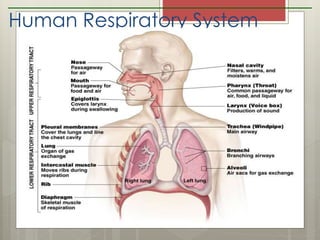




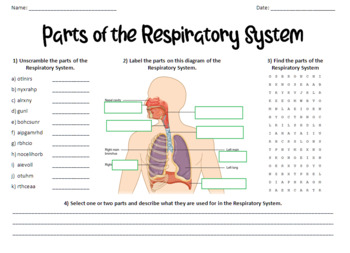


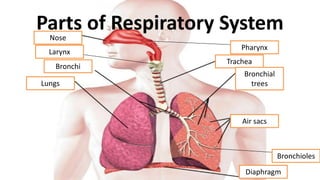












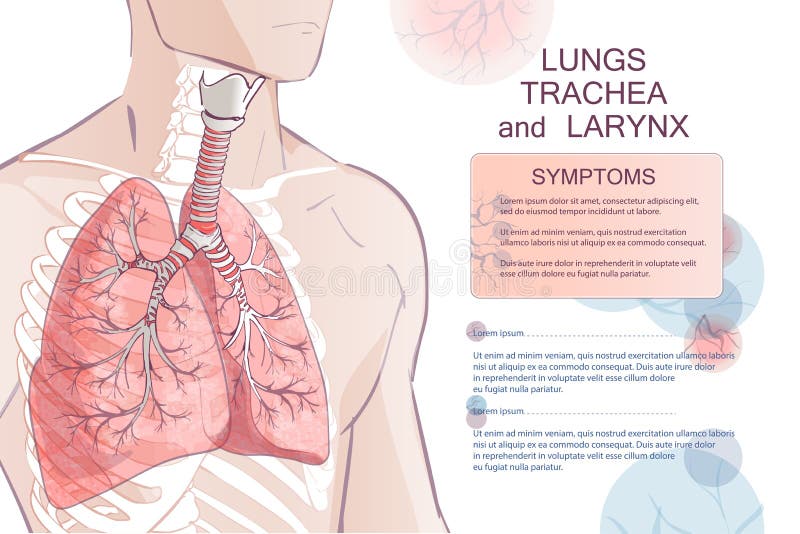





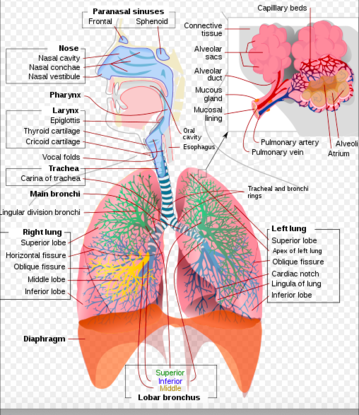
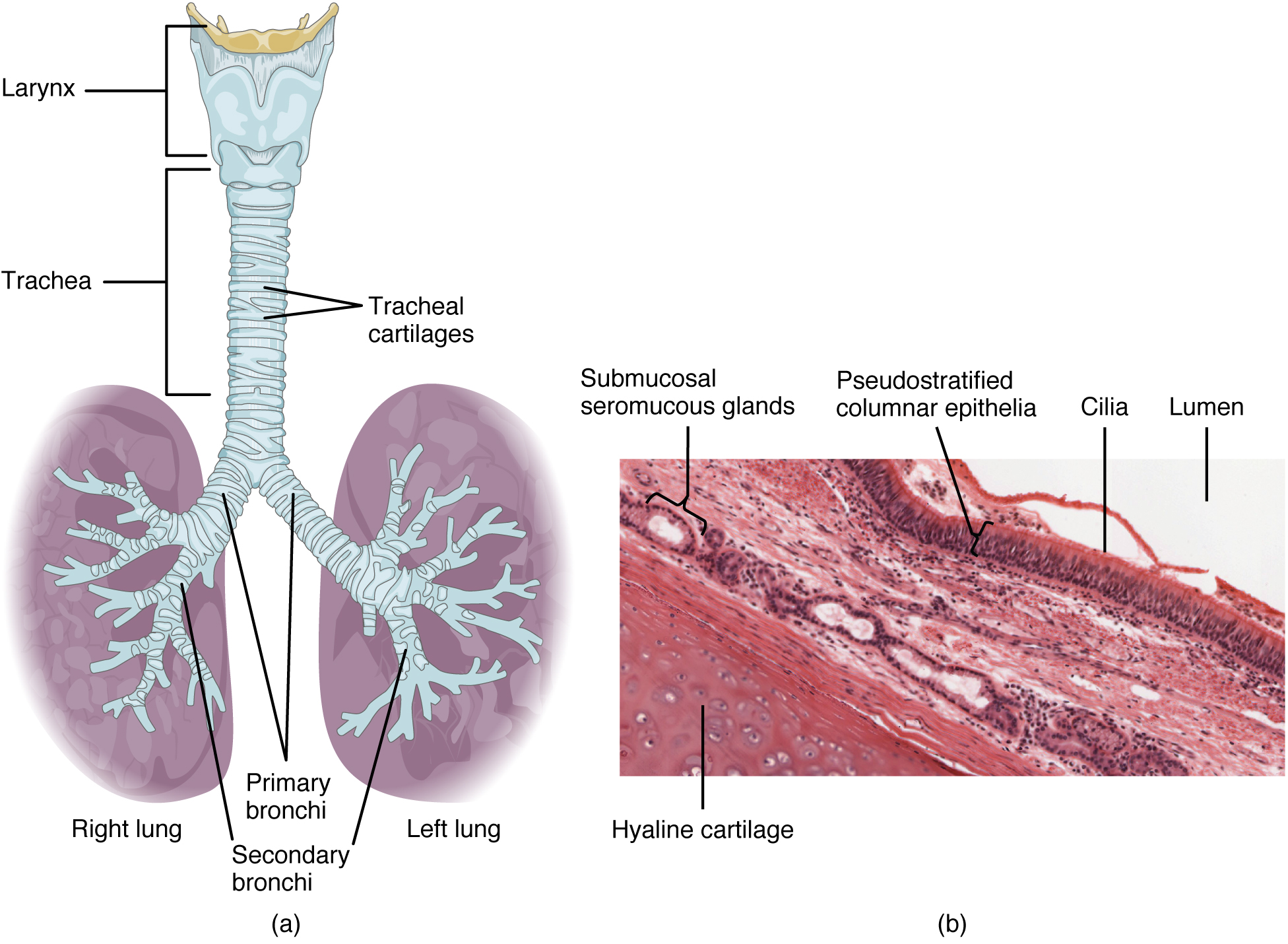
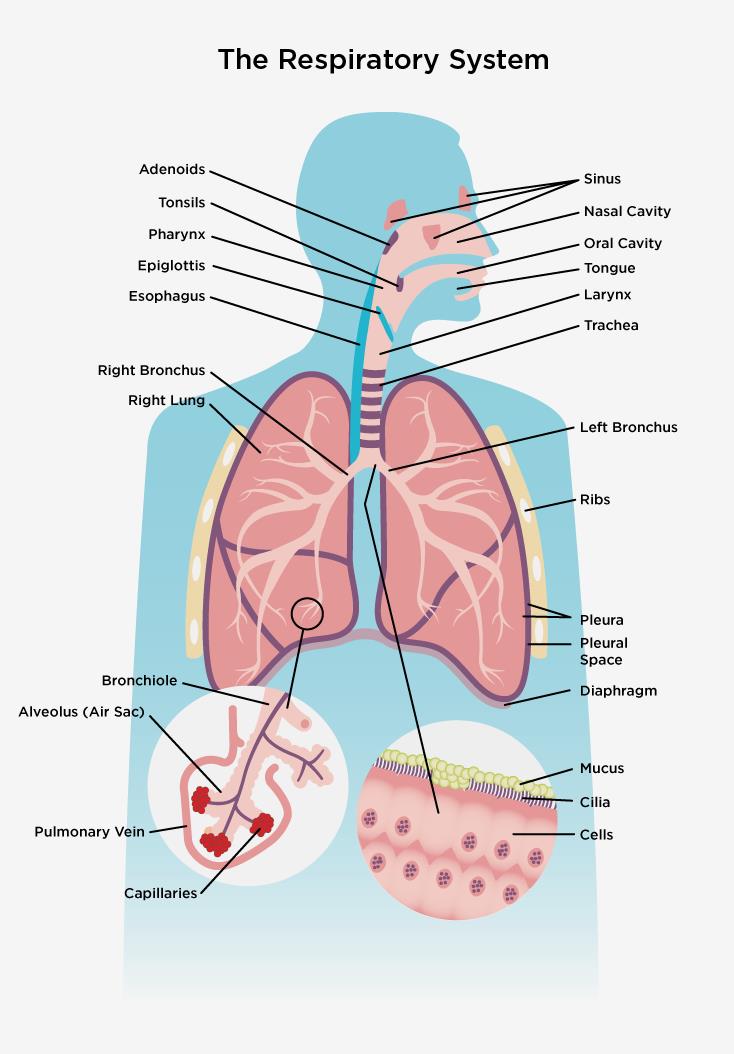




Post a Comment for "39 respiratory system parts"